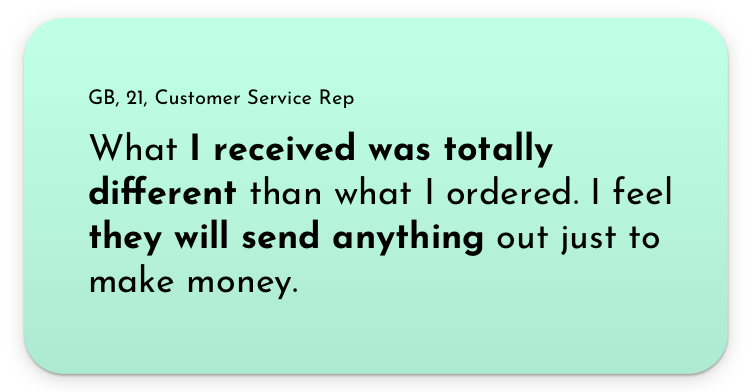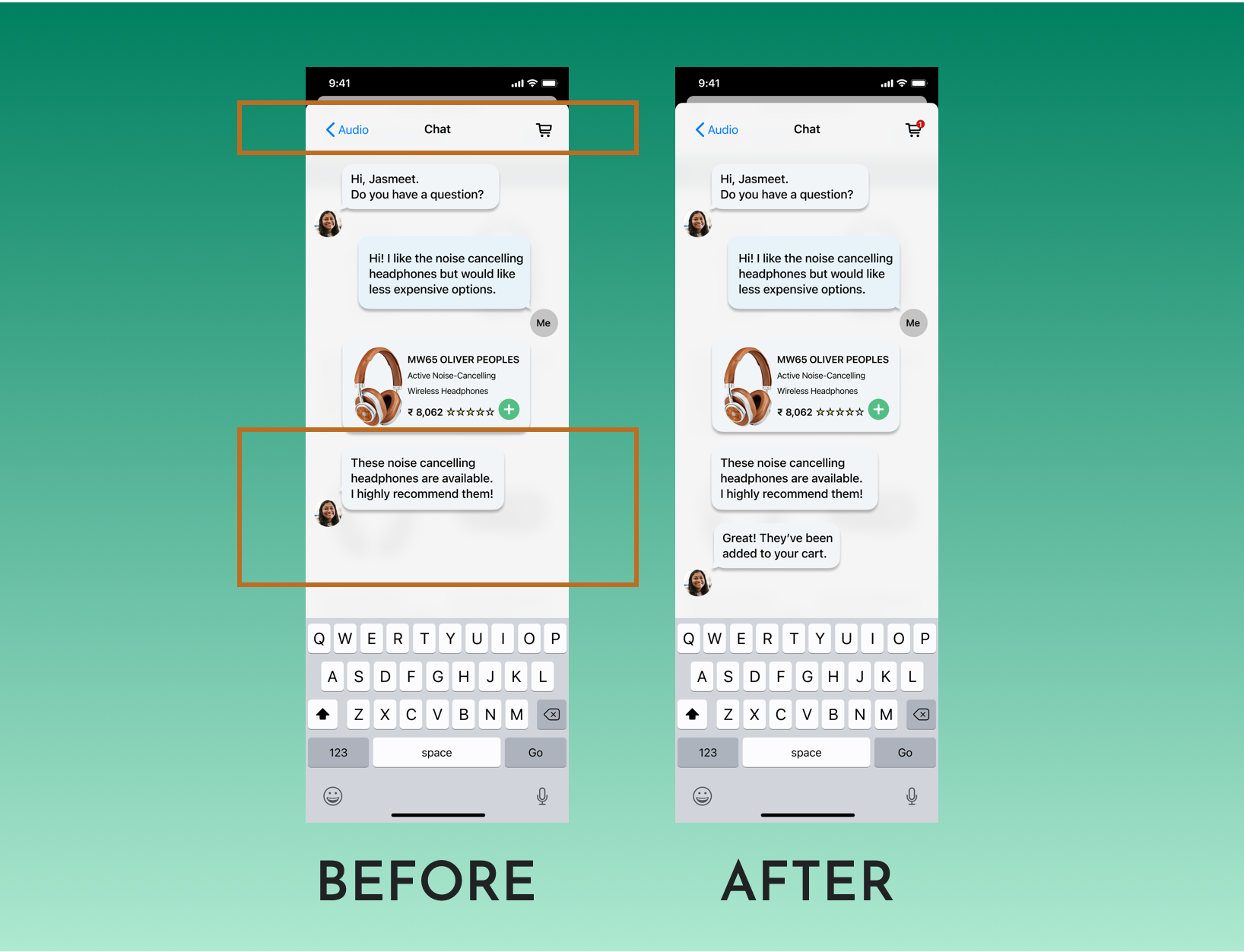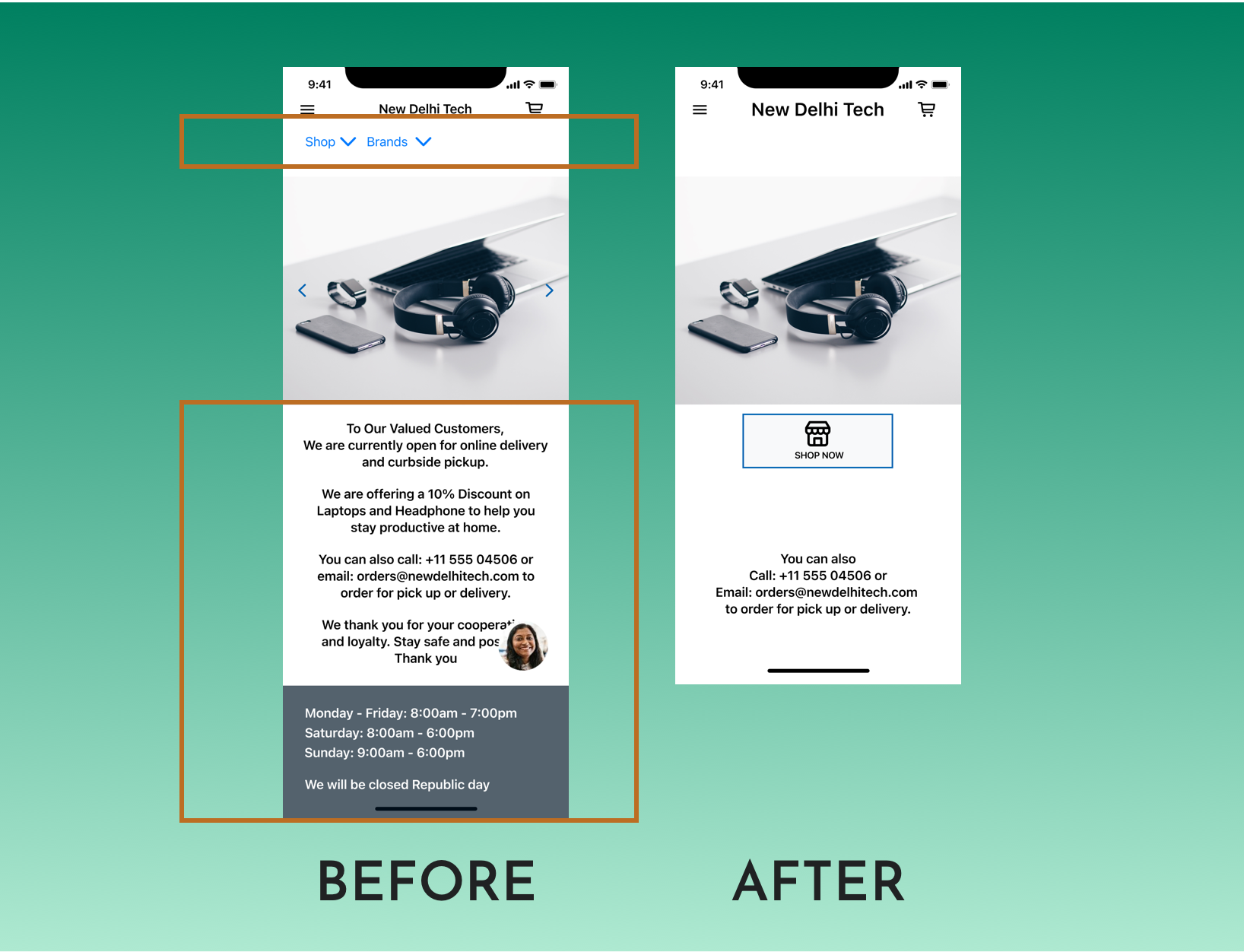DESIGN CHALLENGE
How IT came to be
As part of the BrainStation UX/UI bootcamp, we design students participated in a 5 day sprint challenge in partnership with Shopify. The challenge was to bring the feeling of shopping in a brick and mortar store to the online shopping experience. My roles were as Project Manager and Lead Researcher.
THE CHALLENGE
Our gracious partners at Shopify presented us with a “How Might We” question to get our creative problem solving juices flowing. ..
HOW MIGHT WE BRING BRICK AND MORTAR EXPERIENCES ONLINE SO THAT CONSUMERS AROUND THE WORLD CAN GET ENRICHED SHOPPING EXPERIENCES LIKE THEY MAY GET IN STORE?
It was now our job to narrow the scope to a more specific problem space in order that we could produce a Minimum Viable Product at the end of the 5 day sprint.
DISCOVERY PHASE
Secondary research
Taking into consideration the Next Billion Users we began by narrowing our scope from the global landscape to a large and growing market. Our secondary research showed that India has a large and growing mobile first urban millennial population. Hundreds of millions of Indian millennials shop online. There are also 63 million small, independent businesses in India.
Next we reached out for interview participants and arranged for 4 online face-to-face interviews.
We wanted to gauge the level of comfort that India’s urban millennial shoppers have when shopping online. We needed to know:
How do they feel when shopping online?
What makes them most comfortable when shopping online?
What is missing in the online experience versus in-store?
ASSUMPTIONS INTO QUESTIONS
Possible pain points
Our secondary research findings helped guide our interview plan by raising some assumptions that we could then validate or invalidate through speaking with actual Indian millennials. We found the following indicators of possible pain points:
We assumed:
a lack of trust that items will be delivered at all
a lack of trust that the correct items will be delivered
a lack of trust in payment systems
We also assumed that a lack of communication between retailers and consumers is a large part of the lack of trust issue.
KEY RESEARCH INSIGHTS
LACK of trust
Indeed we uncovered a pervasive lack of trust in the online shopping experience.
Users indicated receiving the wrong items on more than one occasion, discomfort with dealing with third party sites and troubles with communicating with retailers.
From these insights we synthesized a persona.
Before moving to ideation, we circled back to refine the problem space prompt:
“HOW MIGHT WE CREATE A SENSE OF TRUST AND COMMUNITY BY HUMANIZING THE ONLINE BUYING EXPERIENCE SO THAT URBAN DWELLING INDIAN MILLENNIALS WILL BE COMFORTABLE SHOPPING WITH LOCAL RETAILERS ONLINE?”
IDEATION PHASE
Sketching and deciding
Armed with a shared understanding of our user’s motivations, goals and pain points we began ideating. We rapidly produced sketches using the Crazy 8s method. We then performed anonymous dot voting to select the best solutions. It wasn’t hard to choose a winner; 3 of us made similar sketches. The winning idea was to create a virtual shopping assistant in the form of a chat bot designed to instil a sense of trust throughout the online shopping experience.
PROTOTYPING AND TESTING
straight into hi fi
Given the tight time constraints of the sprint challenge we could only afford one round of testing and iterating. We tested our initial prototype in high fidelity on our fellow students. Not an ideal approach but a necessary one given the challenge. We planned our fixes using an action priority matrix.
We were able to make many of the changes due to the fact that many required low effort, though I’m sure if we had more time for further testing we would have found more high effort, high impact changes.
Interactive prototype
The solution in action
The result is a hi fidelity prototype of Jasmeet’s experience purchasing a set of headphones from a local electronics retailer.
You can view the prototype here!
KEY LEARNINGS
Ongoing considerations
Don’t try to boil the sea.
This sprint experience produced takeaways for me both as a Designer and as a Design Student. This was the first time most of us students had participated in an industry sponsored sprint. A mistake that arose as a result of our inexperience was in our effort to try and solve too many problems with our solution. We wound up attempting to address the entire end-to-end shopping experience and build trust into the browsing, purchasing and shipping experience. Our efforts would have been more successful had we concentrated more on the possible use cases the chat bot may be utilized for and left the shipping piece for future sprints.
In addition, this was an academic challenge; the sprint was an approximation of a real world experience. All of the participants were Design students, there were no Data Scientists, or Web Developers involved. The experience would have been enriched by having cross functional participants; an opportunity that we were subsequently given in a 24 hour hackathon which I will detail in a forthcoming case study.
Overall I am happy with the results and gained a greater appreciation for the design process. I learned to trust my teammates, trust the design process, and learn from my mistakes.
We were also gifted with an incredible opportunity to be mentored by some wonderful people from Shopify. A key takeaway here was this: it is one thing to be a lifelong learner, but it is what you do with that learning that becomes a growth mindset.
Thanks for reading! And of course, please feel free to email me at kylemcgregor@rogers.com with any questions or comments you might have. I’d love to talk about my designs and my process in person.










